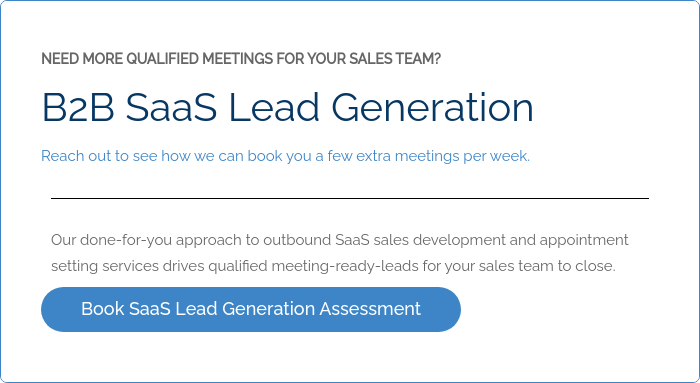Actionable Buyer Persona Development Strategies
Learn actionable strategies and best practices for developing targeted buyer personas, characteristics for segmentation, content mapping and lead nurturing.
If you’re noticing that your efforts seem to be missing the mark, don’t feel discouraged. It’s extremely difficult these days to cut through the noise and get your message in front of the right eyes. It’s time to reevaluate how effective your marketing strategy is at reaching your audience. What is target buyer persona? How do I create a target persona? These are explained well in this article.
Short Summary
- Discover actionable strategies and best practices for developing targeted buyer personas, emphasizing the importance of understanding customers’ needs, challenges, and backgrounds.
- Highlights the impact of buyer personas on shortening sales cycles and generating more leads, with statistics from HubSpot.
- Guides readers through the process of creating buyer personas, emphasizing the need to go beyond demographics and delve into customers’ motivations, desires, and objections.
- Explains how buyer personas benefit marketing, sales, and customer service teams, helping them tailor their communication and engagement strategies to different persona characteristics.
- Mentions the use of key performance indicators (KPIs) to track the effectiveness of buyer personas and emphasizes the importance of maintaining and updating personas as businesses evolve.
- Underscores the significance of buyer personas in shaping inbound marketing strategies and fostering better alignment between various departments within an organization.
36% of companies have created shorted sales cycles using buyer personas. (HubSpot)
It comes down to one question: do you really know your customers?
We don’t mean personally per say. We’re talking about knowing your ideal customers’ needs, challenges, pain points, and key background information. These details can help you create a more impactful campaign that speaks to them. This is the start to developing your target buyer personas.
What is a Buyer Persona?
Your business’s target buyer personas are the semi-fictional representations of your ideal buyers based on data research, patterns, and other vital information.
24% of companies generated more leads using buyer personas. (HubSpot)
It is a detailed description of your ideal customer that includes everything from their demographic to their job title to their career or family background to their favorite hobbies. You can have as few as one or two personas, to as many as ten or even twenty.

Understanding your buyer personas is the key to hyper-focusing your efforts on more qualified leads and tailoring the right strategy for content creation, inbound marketing and product development to their specific needs.
Buyer persona development allows you to align your entire company, from marketing to sales to service, with the same goals and expectations. And as a result, you’ll generate higher value prospects that convert into long-lasting, loyal customers.
The next big question is this: How do you create a target buyer persona?
In this blog post, we’ll break down everything you need to know in order to develop your buyer personas that aligns with your companies value proposition and start attracting more qualified leads, converting more visitors into customers and maximizing your return on investment.
Why Should I Develop Buyer Personas?
93% of companies who surpass revenue targets segment their database by buyer persona.
Before we dive into the process of developing your buyer personas, it is important to understand why it is so crucial first. Generally speaking, establishing your buyer personas is a paramount step to achieve success for any inbound marketing strategy, no matter how big or small your business might be. It also helps you get the most out of your investment in inbound marketing.
Buyer personas go further than the basic demographic information of your ideal customer. They help you discover what makes your customer tick, their own unique professional goals and any shared company-wide goals.
Sure, knowing your prospect’s location, age, and gender are essential factors to consider when building out your inbound strategy, but these leave room for you to make assumptions about a person that might not necessarily be valid.
Taking a deeper, more comprehensive look into the intangible elements of your ideal customer profile will help you make better decisions on how to relate to them. B2B Saas buyer personas help you answer the following questions:
- What kind of content is most likely to generate a response from a specific type of customer?
- How does your ideal buyer prefer to engage in the sales process?
- What problems do customers need to solve, and how does your business help them?
Furthermore, buyer personas are a clear depiction of the customers that generate the most revenue with the least resistance over the longest period of time. Without this vital information, you’ll never truly understand what is working best to attract leads and drives them to becoming customers. Additionally, you will want to map out criteria between MQL vs SQL that dove tails into a clear process for handing off marketing leads to your sales team.
Persona-driven content generated by inbound increases the volume of Sales Qualified Leads (SQLs) by 45%
Developing your buyer persona Hubspot will help you with every area of your inbound marketing strategy from the content you create to SEO strategy you apply to the engagement tools you deploy.
Buyer personas paint a valuable picture that aligns the efforts of your entire organization so that they can effectively nurture potential customers throughout every stage of their buyer’s journey.
If that isn’t enough of a reason to convince you that you need to start developing your buyer persona hubspot, here are three major points that should do the trick:
1. Gain Objectivity
As a marketer, sales person, or business owner, you might fall into a pattern of thinking that you are the target audience. While this might be true in some instances, you’re only limiting yourself and the growth of your business by thinking that you are the only type of customer. There are other personas that you can reach. Building out multiple buyer personas gives you the opportunity to build messaging from several different perspectives and attract more prospects from walks of life.
2. Gain Focus
With a clear definition of one of your buyer personas, you can create content that is more likely to speak to their unique needs and challenges. This gives you the ability to focus your messaging. Without this focus, your efforts become diluted and you can miss out on selling opportunities. Buyer personas align every department of your business to share the same understanding of your customers.
3. Build a More Effective Strategy
Don’t just assume you know what your customers want and need. This is a major mistake that we see way too often with B2B marketing strategies lacking scalability to reach and exceed revenue targets. Conducting the proper research and asking the right questions helps you develop your buyer personas and discover the gaps that your product or service fills. The key is to understand the problems your customers are trying to solve, so you can present the best solution.
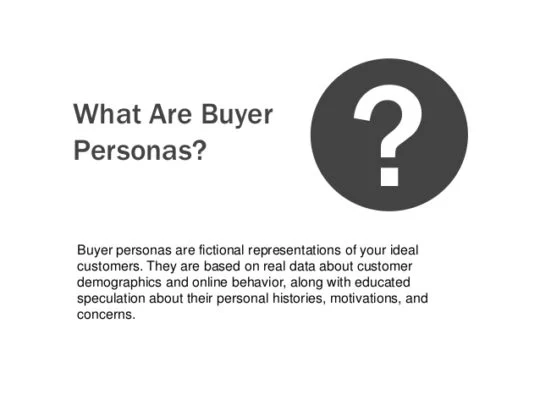
4. Buyer Personas and Inbound Marketing
If you ask any professional inbound marketing specialist, they’ll tell you that the goal of any inbound strategy is to create more targeted outreach. As opposed to outbound marketing strategies in which you cast a wide net and cross your fingers that a portion of the audience will see your ad, inbound marketing strategies are carefully thought out.
An inbound marketing strategy establishes who your target audience is first, and then, through the use of content marketing, search engine optimization, account based marketing, and other digital tactics, design a way to attract and engage that audience.
Inbound methodologies scope out where your ideal customers are hanging out and strategically plant hints for them to discover your product or service. And once you’ve gained their attention, the next step is to keep them intrigued through addressing persona-driven pain points to keep them engaged with your brand to build a relationship.
Over 78% of consumers will only engage offers if they have been personalized to their previous engagements with the brand (Loyalty 360).
For this reason, developing your buyer personas work hand in hand with your inbound marketing efforts. Knowing what makes your customer tick allows you to attract them in more effective ways and continue to speak to their needs and pain points as you engage with them at every phase of their sales cycle.
Inbound marketing uses online content such as the following to attract and engage leads:
- Blogs and articles
- Video content
- E-books
- Podcasts
- Newsletters
- Social media outreach
- Whitepapers
- Online advertising
With a clear idea of your buyer persona, you can create all of the above with more intention and a more targeted direction. Buyer personas help you understand which format and media channels will garner the best response, the tone you should implement when writing content or communicating with your ideal buyers, and the types of content or call to actions that are most likely to generate the best response rate.
How to Create Your Targeted SaaS Buyer Personas

Now that we’ve covered why buyer personas are vital to your inbound marketing strategy, let’s explore how you can create your target buyer persona. It’s a relatively easy process.
First it’s important to know what a buyer persona is not.
Far too often, we see businesses assume that they need a buyer persona for every person that they will encounter along the sales cycle. Other mistakes include focusing too much on job titles or roles. Buyer personas are not to be confused as market segmentations, roles or the actual buyer’s journey itself.
The idea behind your buyer persona development should be based on situations, scenarios, and behaviors. It’s all about learning from the human behaviors of your existing customers and gaining an understanding of why your customers perform specific activities to solve unique pain points challenges.
While details about an ideal customer’s demographic such as their age, gender, ethnicity, or whether they are employed, single/married, and where they live, are all very important to know, these do not give you a deeper level of understanding of their personal needs and challenges. Personas dig a little deeper to give you a more vivid idea of the personality of the buyer.
Buyer personas help you narrow your scope. For example, they give you more of an understanding of what social media platforms they might use, how they prefer to interact, and what specific factors they look for when they are deciding to make a purchase.
So how do you hone in on the personality and behaviors of your ideal customer and develop your buyer persona? The next section of this article is the steps to creating your target buyer persona. We’ve broken it down into three parts.
1. Do Your Research
Conducting the right actionable buyer persona research will give you the insight into the common behaviors of your existing customers, potential prospects, and others outside your contact base that might fit the description of your ideal customer.
The following is a list of methods to use to conduct your research:
- Take a look at your contacts database and site analytics to reveal trends in how your leads or customers interact with your product or service, find and consume your content and identify any patterns.
- Utilize form fields when building forms to use on your website. These will help you to capture important persona details.
- Gather feedback from your marketing and sales teams about the leads that they interact with and identify any generalizations that they can make about the different kinds of customers that you engage with the best.
- Interview prospects and customers to find out what they like about your product or service and what they enjoy about the buying process
- Use surveys to gather feedback from prospects and customers
With all of the useful data and information you gather from conducting your research, you can then organize the information into a template that makes it easy for everyone in your company to digest and understand the data. Then the next step is to find the common patterns that stand out and apply this to your initial development of your buyer persona.
2. Check Your Site Analytics
Before you conduct your direct research through interviews, surveys and feedback from your teams, you should take a look at your site analytics. This valuable data can help you strategically focus your inbound marketing efforts and build your buyer persona.
Your site analytics will show you where your site visitors came from, what keywords they used to discover your site, and how much time they spent on your site once they arrived. This type of data shows the search terms that brought your leads to your site and the devices or platforms they used.
3. Interview Customers and Prospects
It makes sense that the best way to learn about your customers wants and needs is to go straight to the source and ask them. But how do you find the interviewees?
There are four different places to look: existing customers, prospects, referrals, and third-party networks. Below outline 17 factors for consideration.
4. Existing Customers
Your current customers are an excellent place to start gathering the information you’re looking for and start interviewing. These are people that have already purchased your product and experienced your sales process.
Some will absolutely rave about your products or services, while others might not. This is good! You want to hear from every angle. In fact, customers that are unhappy with their purchase are likely to give you some valuable insight into how you can improve that is specific enough to help you develop your buyer persona.
Another great advantage to interviewing your existing customers is that they are less likely to require an incentive. Most customers are willing to share their opinion because they appreciate the opportunity to invite you into their world, tell you about their challenges and what they think about your offerings.
Furthermore, customers like to think that they played a part in the story of a brand. This benefits you in two ways. You can gain some valuable insight that helps you build out your buyer personas, while building a stronger relationship with that customer through effective client engagement program which boosts their loyalty and connection to your brand.
5. Prospects
Potential customers that haven’t purchased your product or service yet are also a great option for conducting interviews. Using your website analytics and lead generation forms, you can pinpoint specific leads and prospects that might fit into your target buyer persona. It works out great because you already have their contact information.
You can obtain some helpful insight into how they are enjoying the initial phase of their buyer’s journey, or why they are still on the fence about making a purchase. This can give you some direction for further development of your buyer personas.
6. Referrals
If you are a newer company with a limited customer and lead database or if you’re looking to expand your interview process or reach new markets, you can opt to interview referrals of people that might fit into your target buyer persona. This is where your network of coworkers, existing customers, or social media contacts come in handy. Asking around can help you find people to interview.
This can be a tricky step to navigate and you might not gain a large amount of interviews this way, but the interviews you do end up scoring will most likely be high quality. You can start by searching on LinkedIn for people that might fit your buyer personas, see which ones you have common connections with, and seek an introduction from those connections.
7. Third-Party Networks
If you are in need of interviews that are completely unrelated and disconnected from your company, you can look into third-party networks to recruit interviewees. Craigslist is a great way to post ads, while other testing platforms allow you to run remote user testing. You might have less control but it’s a great resource to conduct interviews and gather insight quickly.
8. Ask the Right Questions
When interviewing customers and prospects, the key is to ask the right questions that will give you the right insight for your business. It is also important to conduct the interview with transparency, dexterity, and tact. You want to capitalize on any information you already have about that prospect or customer in order to start off on the right foot and build rapport from the get-go.
The most effective questions are open-ended. Yes or no questions give you limited information. And while every industry is unique and may require different questions, similar customer behaviors and characteristics can be applied to develop buyer personas.
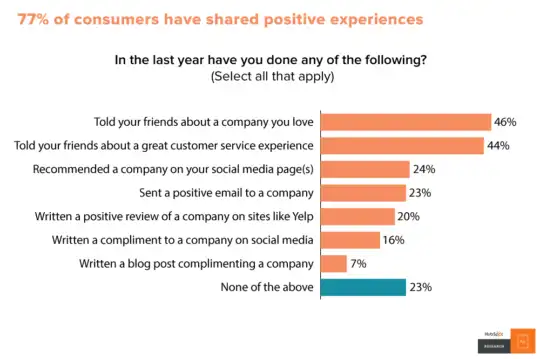
Sometimes “tell me more about that” is one of the most powerful questions that will help prospects to continue opening up and sharing valuable insights.
We’ve compiled a list of questions for each of the universal segments that commonly make up target buyer personas.
9. Demographic Questions
These basic questions are a good place to start in order to establish an initial understanding of the person you are interviewing.
- Where do you live?
- What is your age?
- What is your gender?
- What is your marital status?
- What is your household income level?
- Are you a homeowner or renter?
- Do you have children?
10. Career Questions
If you are a B2B company that markets to other businesses, it’s important to understand your target industry and the types of job roles you’ll encounter. This next round of questions will help you get a better grasp on the customer types you’ll be interacting with regularly.
It’s important to know if your sales process begins with an entry-level employee or if you start talking with the decision maker right off the bat. Additionally, its helpful to understand what key factors influence a customer’s decision when making a purchase.
- What industry do you work in?
- What is your job level?
- What job level do you aspire to be?
- How long have you been working at your current position?
- What is your level of education?
11. Industry-Related Questions
To piggyback off of the work related questions, you can ask the following questions to further understand the specific pain points of this particular customer’s industry.
- What are some of the most common challenges you experience that are specific to your industry?
- What is the value that is usually associated with your industry?
- What is the preferred type of sales experience for your industry?
- What are the most common objections to your product or service?
- What are the top questions asked by your customers?
- What are the top questions asked by your prospects?
12. Daily Life Questions
An understanding of how your ideal customer spends their day can shed some light on what they might find challenging and how they like to enjoy their free time.
- What do you like to do for fun?
- How much time do you spend at work?
- How much time do you spend at home?
- What do you watch on television?
- What does a typical day look like for you?
- Who are some of the most important people in your life?
13. Pain Point Questions
Understanding what makes a customer anxious, uncomfortable, or frustrated is one of the best ways to ensure that your products or services are an effective solution. It’s a way to predict what they need before they even know themselves. Discovering key pain points allows you to fine-tune your messaging, develop great rapport, and build trust.
- What part of your job/day do you find stressful?
- What is the most frustrating part of your day or week?
- What is one of the worst customer experiences you’ve had before?
- What makes you worried?
- What accomplishments are you most proud of?
- What is your least favorite part of your day?
- What is your most favorite part of your day?
14. Customer Habit Questions
Finally, customer habit questions will help you predict consumer behavior to better develop your personas.
- Where do you usually learn about a product or service?
- What offline resources do you use most?
- What online resources do you use most?
- Where do you prefer to shop?
- How do you prefer to interact with vendors?
- Whom do you typically ask for recommendations about a product or service?
- How important is it to you to get a good deal?
- What types of portable devices do you own/use?
- What are some of the more luxurious or indulgent purchases you’ve made?
15. Put Your Research Into Action
With the valuable information you’ve gathered from data research and interviewing prospects, customers, and referrals, you can then sort through this information and insert it into a buyer persona template. We recommend using HubSpot’s buyer persona templates as a great tool.
16. Add the Demographic Information
The first piece of information to add to the template is the information you have gathered about your customer’s demographic. This can be their gender, age, marital status, location, etc.
Another great tip is to add any buzzwords and mannerisms that you picked up on during your conversation or interview. This can be helpful to not only paint a clearer picture, but to give your marketing and sales team some easy clues that they can pick up on that might help them identify a particular persona when they are on the phone with a new prospect.
17. Describe Their Motivations
This next section will further explain your potential customers’ “why”. The interview questions that pertained to their pain points, goals, and aspirations will help you establish this next part of your buyer persona template.
18. Desires, Objections, and Concerns
In order to prepare your marketing and sales team for the conversations they will have with these personas, it’s helpful to add some real-life quotes that you picked up on in the interviews that convey an idea of who your ideal personas are. This might include what concerns them or what they want.
Furthermore, this section should also include any common objections your team might encounter as well. That way they can anticipate them and address them before they even ask.
19. Craft the Right Messaging
This next part is all about how to explain your products or services in a way that will resonate with the specific persona you’re speaking with. The right verbiage and points to focus on will help you speak the right language.
It’s important to understand how best to describe your solution to a persona based on their needs, pain points, and what objections they might have. In order to do that, you’ll need the fine-tune your messaging based on your targeted personas.
How to Use SaaS Buyer Personas
So you’ve developed your target buyer personas and got them down on paper, now what? Don’t just let your carefully crafted buyer persona docs gather dust in a Google Drive folder and never see the light of day. It’s time to put them to use across your entire organization.
The next step is to use your buyer persona to lay the foundation for your inbound marketing campaign. It should help you shape how you proceed creating content, engaging with customers and directing your team to have aligned goals and objectives.
You want to ensure that your marketing agencies and sales team are equipped with an effective method of classifying prospects according to the persona they match. Your team should be able to identify a specific persona from the initial interaction. That way they can tailor their pitch, the sales vernacular they use, the social channel they engage with them through and other details that vary from persona to persona.
You can set your team up for success by preparing them with the right questions to ask at the beginning of the conversation. Their answer will give you a clear indication of the type of persona you have encountered.
Each department of your organization will benefit from using your developed buyer personas. We’ve broken down how each department, from sales to marketing to customer service, can take advantage of using your buyer persona to help them work more effectively and convert more visitors into sales.
Personas for Marketing
Marketing professionals can use buyer personas to refine their content creation and inbound marketing strategies. Understanding the needs and pain points of their leads allows them to tailor the messaging they use within the content to capture their attention. It also gives them insight into which social channels to build content for and how to optimize their web copy to work with the preferred device of specific personas.
Creating content based on particular personas means answering the questions that mean the most to them. For example, take a blog article. The title should attract and inspire specific prospects to read the blog based on the needs and motivations that you’ve learned about the persona.
This is where the descriptive buzzwords, keywords and phrases that you might have collected in your interviews will come in handy. It’s helpful to have a list of terms and phrases that they use when they talk about their challenges, so that they can be applied to your search engine optimization (SEO) and content creation.
This can be done by figuring out key questions that you’ve established your persona might want answered, or problems that they are looking to solve. Then pick a catchy title with long-tail keywords that will pertain to that question/problem.
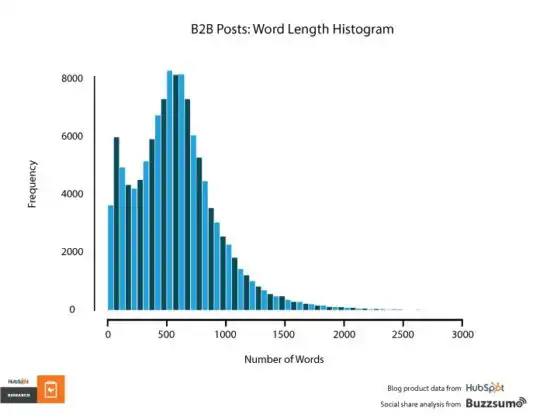
The key is to communicate your messaging directly to the audience you want to target. The content you create needs to cater to your personas’ interests, style, and lingo. Does this persona use industry-specific terminology or do they use more informal language? This is an essential factor that should be considered when crafting your blogs or copy. The wrong choice of language can deter a potential customer.
Personas for Sales
While marketing primarily utilizes personas in order to attract the right prospects, sales on the other hand uses personas to engage with those qualified prospects. Sales are the ones to directly interact the most with customers.
For this reason, they must be prepared to validate personas and adapt their conversations to appeal to their characteristics. This allows them to make recommendations to marketing in regards to areas that need improvements.
Through the use of buyer personas, sales professionals can find ways to be more helpful throughout the sales process. They can also deliver value more efficiently and make the most out of their time with each and every contact by providing only the information you know that they will want to hear.
Sales can also make great use out of buyer personas in preparation for a sales conversation to have a general idea of how to start, what to focus on and what the customer values most. They can create more meaningful communication.
Additionally, personas can allow your sales team to discover any mutual contacts that they might be able to leverage in order to streamline the sales journey.
Personas for Customer Service
Similar to your sales team, your customer service team can also greatly benefit from using buyer personas to tailor their client engagement communication techniques to prospect and customer preferences. But customer support can go even further and apply persona characteristics to help with product development. This allows your team to build new features around the feedback from specific personas.
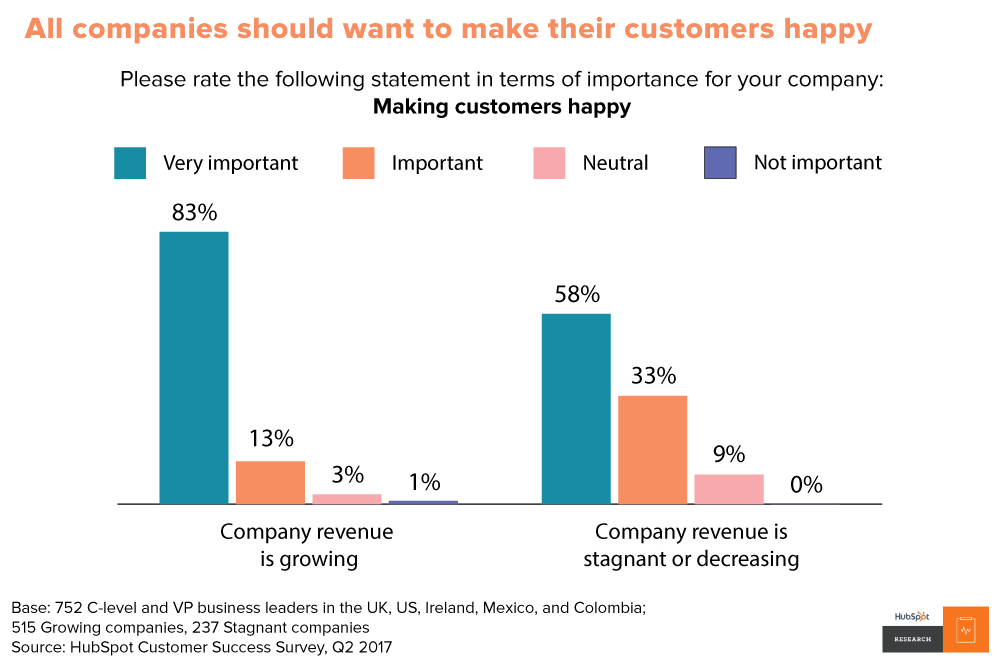
When you add new features or develop new products, are you focusing too much on only catering to one specific persona? If you’re excluding the other key personas in your rolodex, you’re shooting yourself in the foot.
As you start to build a new feature, recognize who you are building it for and how it might make their job or daily activities easier. Also consider how it solves any pain point that they might have. If you do this for each of your personas, you can better develop your products to work well for all types of customers.
Personas are like the pulse of your organization. They have an impact on everything from marketing to sales to customer support, even all the way through to product development.
How to Utilize KPIs with Personas
As in any area of marketing, leveraging the right data can help organizations make the most out of their buyer personas. It will help you discover if you have left out a vital persona or misunderstood any important aspects when developing your other personas. It will also reveal any mistakes you have made in prioritizing a specific persona that won’t bring you results.
Every business will have different key performance indicators or KPIs that are unique to their business objectives and goals. Determining which KPIs are critical to your success and growth is essential.
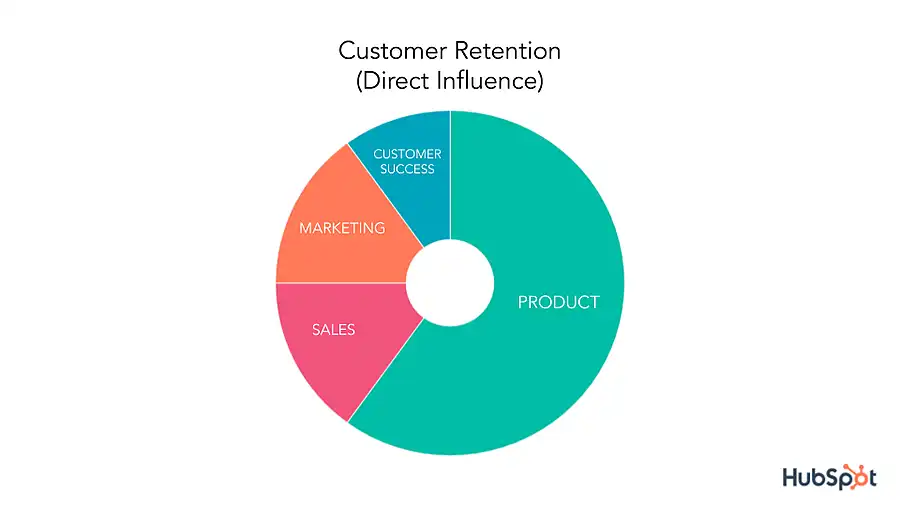
Examples of KPIs in regards to buyer personas include tracking marketing qualified leads (MQLs), sales qualified leads (SQLs) or revenue patterns by certain personas. These are great indicators of whether your persona development is working in your favor or against you.
However, it’s important to first decide whether or not your KPIs should be centered around your buyer personas. For example, in the instance that your company needs to grow a particular business segment that only applies to one buyer persona, it makes perfect sense to align KPIs with that persona.
On the other side of the token, for a company that is just starting out, aligning your KPIs with buyer personas doesn’t make as much sense. Not yet at least.
Either way, discussions in the sales process will help you evaluate whether or not your buyer personas are resonating. At the end of the day, the most valuable data can be gathered just by talking to your team, prospects and customers.
Maintaining Your Target Buyer Personas
While the initial process of building your target buyer personas will mostly consist of interview customers, prospects, and referrals, the development of your personas will need to continue to adapt as your business grows. It’s important to continuously optimize all of your processes and strategies to keep up with how your personas change.
You’ll begin to uncover more and more as your business grows. Keep going back and revising your personas to ensure that you’re attracting ideal customers through organic search traffic, engaging and delighting them in the most effective manner.
Buyer personas should be dynamic and you should periodically reevaluate and revise them, especially if you’ve changed your products or services, expanded to new territories or have seen any major shifts within the economy or your business. Buyouts or mergers, strategy shifts, or new features or interfaces are all aspects that might cause changes to your buyer personas.
You should at least try to analyze your personas once a year to make sure that they are keeping up with any pertinent trends and that they are still working for your business goals. Any new marketing information might also affect your personas.
SaaS Buyer Persona Takeaways
Developing your buyer personas lays the foundation for an effective lead generation marketing strategy to map success at each stage of your sales funnel. It gives you an inside look into what your potential customers are thinking, feeling, and experiencing so that you can provide the best solutions that will satisfy their needs.
Personas work for every department – from marketing, sales, customer support to product development. They can positively impact the content you create and the way that you deliver it to your prospects.
Buyer personas are a great place to start when you are establishing an effective inbound marketing strategy that deeper aligns your sales and marketing teams.
In order to create buyer personas that will work well for your business and to your team’s advantage, you’ll need to conduct the right market research through data analysis and interviewing prospects, existing customers and referrals. The right questions will offer in-depth details into the needs, pain points, motivations, and day to day life that your potential customers have.
Working with an established and experienced inbound marketing agency can help you develop buyer personas that will allow you to create the most effective inbound strategy and attract, engage and delight your customers throughout their buyer’s journey.
Frequently Asked Questions
What is a SaaS buyer persona, and why is it crucial for SaaS businesses?
A SaaS buyer persona is a detailed profile of your ideal SaaS customer, encompassing their characteristics, goals, challenges, and preferences. It’s vital for SaaS businesses to tailor their products, marketing, and support to meet customer needs effectively.
How can I create accurate SaaS buyer personas for my software product?
To create effective SaaS buyer personas, gather data from existing customers, conduct surveys, analyze user behavior, and interview target customers to understand their pain points and motivations.
Can a SaaS company have multiple buyer personas, and how do I manage them effectively?
Yes, a SaaS company can have multiple buyer personas representing different user segments. Manage them effectively by prioritizing the most significant and ensuring that your marketing and product strategies address their unique needs.
How do SaaS buyer personas influence product development and feature prioritization?
SaaS buyer personas provide insights into what features and functionalities your customers value most. They guide product development by helping prioritize enhancements that align with customer preferences.
Are SaaS buyer personas static, or should they be updated over time?
SaaS buyer personas should evolve over time as market dynamics change, customer preferences shift, and your product matures. Regular updates ensure that your strategies remain relevant.
How can SaaS buyer personas assist in customer retention and reducing churn rates?
Understanding your customers’ pain points and preferences through buyer personas allows you to proactively address issues, provide personalized support, and enhance the user experience, ultimately reducing churn and improving customer retention.

